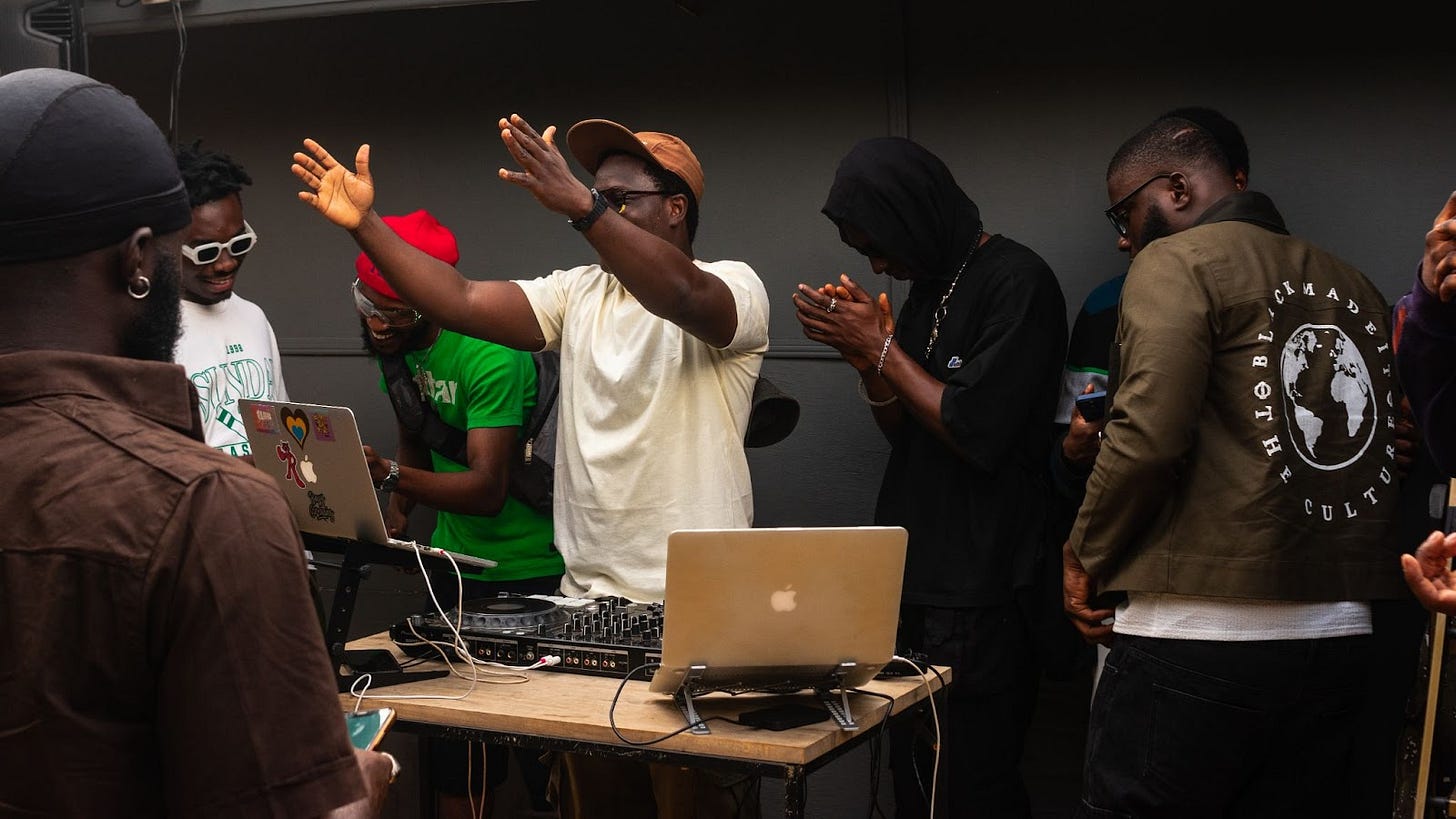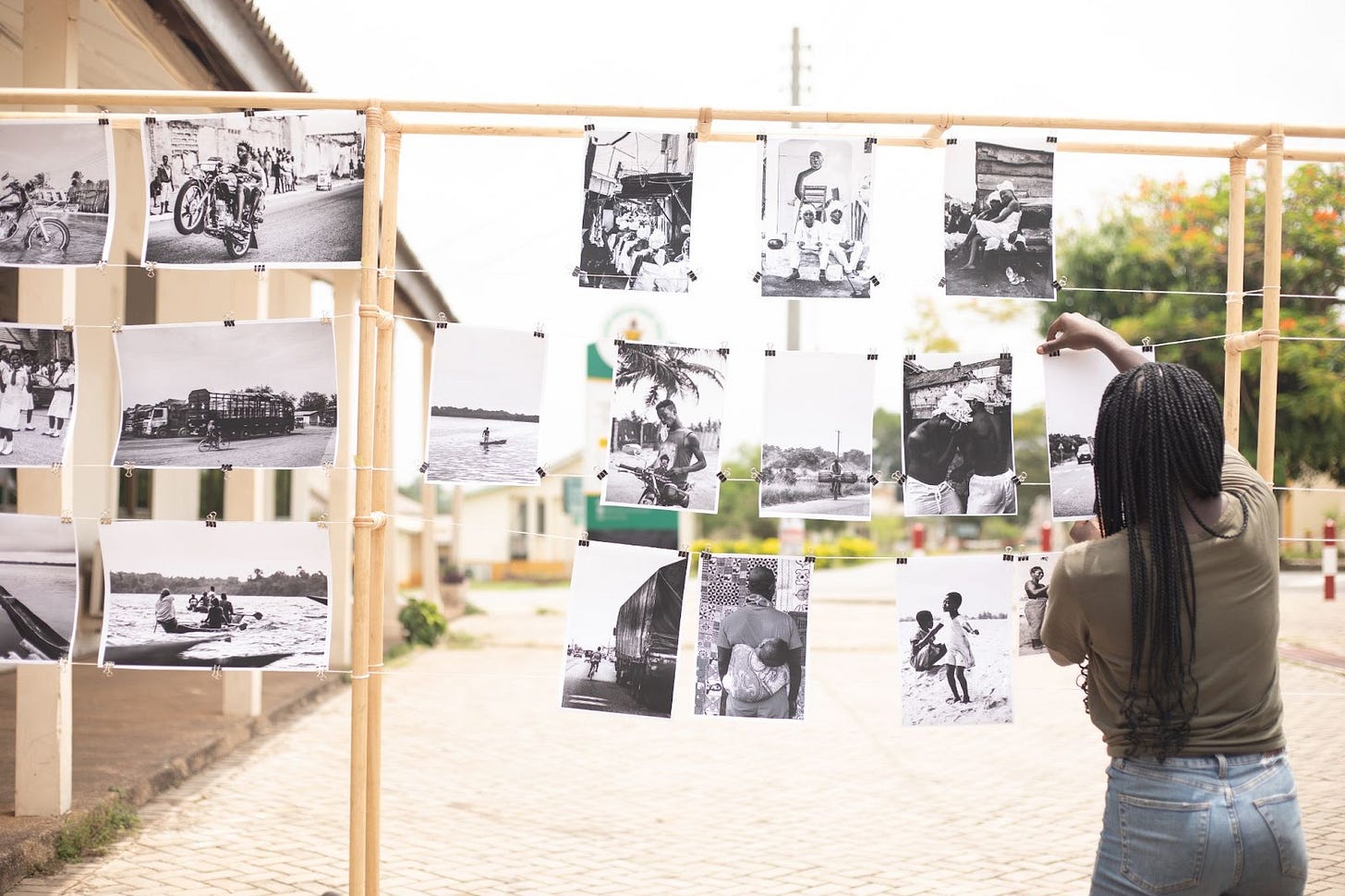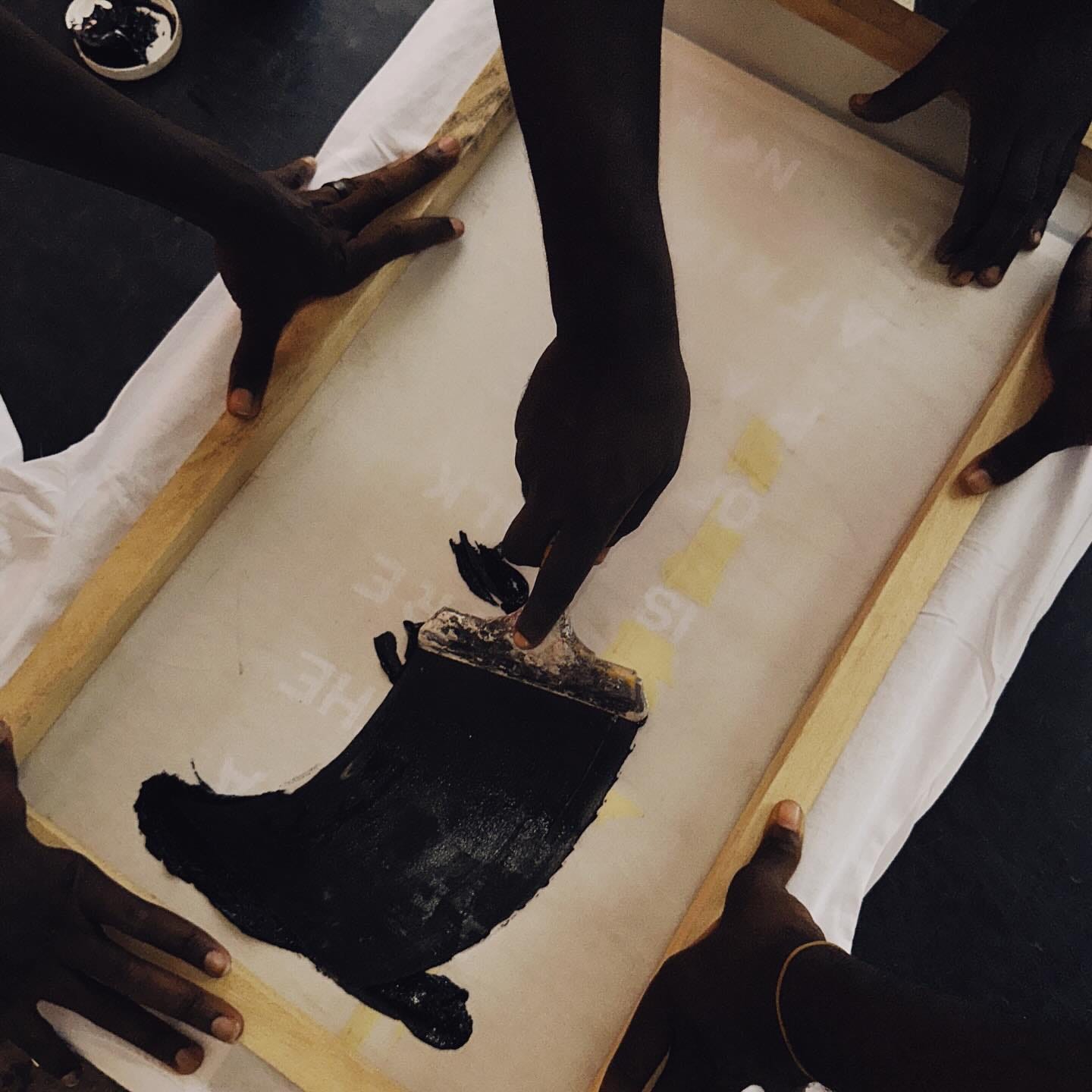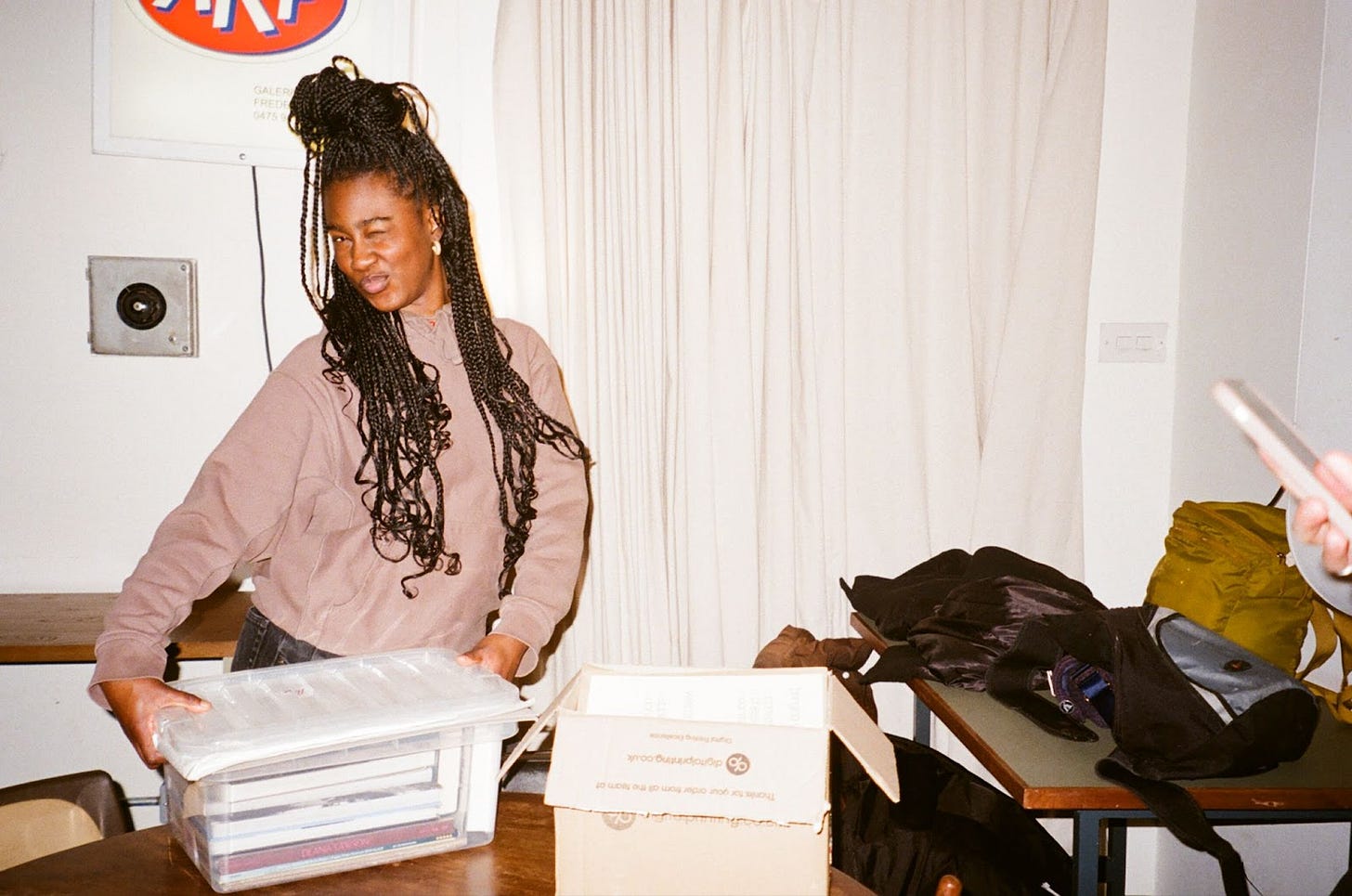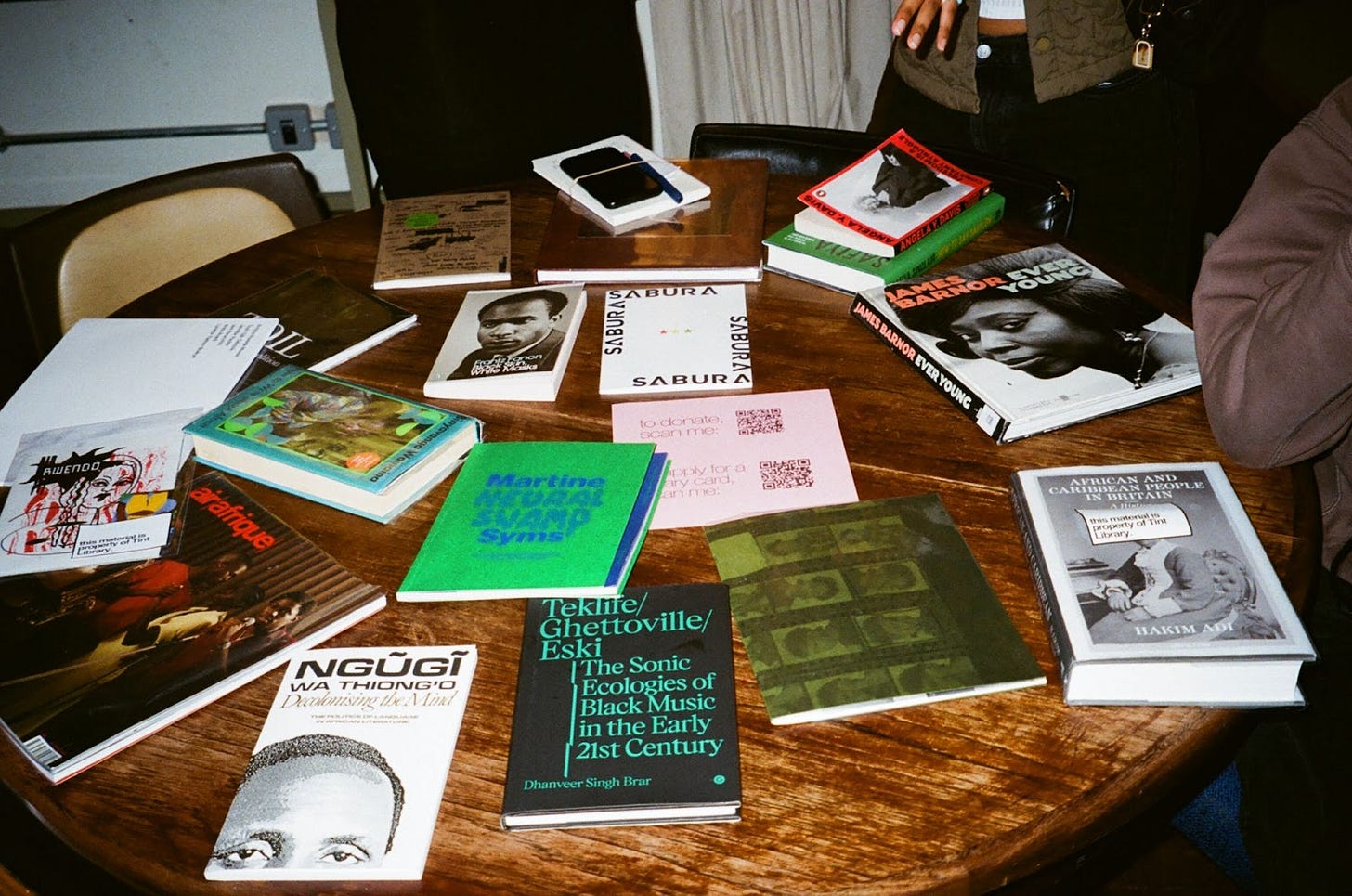A year of MØRNING People Fund...
How did this year's winners Playbody, Tint Library and Project Kumasi spend their £4000 grant?
MØRNING. It's December already (whaaat!) which means MØRNING People Fund has funded FØUR applicants in 2024. That’s a whopping £16,000 given directly to artists. If you're new here, MPF is a quarterly £4,000 grant for artists, creatives, dreamers and innovators - those who are making boundary-pushing work that keeps culture alive. Click here for all the tea.
When we launched the fund in 2021, our mission was to give back to the creatives pushing culture forward.. We wanted to build a safe home for projects that aren’t afraid to be bold or to sit on the fringes, because its this work that truly makes our world less shit. The MØRNING People Fund is integral to our mission, to fuel the creative culture that inspires us all, and push incremental change through our actions. We call it:Robin Hooding that shit.
This end of year feeling got us reflecting, so I (Isabella, Community and Operations Manager at Ø) caught up with the artists that we funded earlier this year to hear about how the MØRNING People Fund supported them, and what went down once the £4,000 was in their pockets.
PRJCT Kumasi
Isabella Reid: Tell us about your project?
Douglas Opoku: PRJCT Kumasi is a not-for-profit collective of multidisciplinary creatives that blends art, culture, and community activism rooted out of the vibrant city of Kumasi, the regional capital of the Ashanti Region in Ghana, West Africa. We aim at having an established creative capital [cultural centre] by collaborating, empowering, and highlighting/showcasing the undiscovered and independent talents from Kumasi and within the Ashanti Region. Ideally, the end goal is to have more than two creative capitals in the country as the project expands.
Isabella Reid: Do you believe there is enough support out there for creatives today? If the answer is no, why do you think that is?
Douglas Opoku: Unfortunately, I don’t believe there is enough support, especially for creatives working outside of major urban centres or in communities where resources are limited. The global creative economy tends to prioritize high-visibility projects in Western markets, leaving many grassroots initiatives underfunded. Bureaucracy, limited access to funding, and the lack of tailored support systems further stifle creativity in underserved areas. We need more localized support systems that recognize and nurture talent at all levels.
Isabella Reid: How did the fund support you?
Douglas Opoku: The MØRNING People Fund was very instrumental in bringing PRJCT Kumasi's "PRJCT US: A 2-Day Creatives Event" passion project to life! It allowed us to acquire the resources we needed as well as collaborations with conductors and the creatives who participated in the event. More importantly, the fund gave us the freedom to take creative risks, experiment, and push boundaries. The visibility it brought also helped us form partnerships that will benefit future projects, further embedding our work in both local and international conversations.
Tint Library
Isabella Reid: Tell us about your project?
Mariam Adesokan: Tint Library is a London-based, Black owned, independent library that provides art-based materials available to borrow for free. Tint operates like a traditional library in the sense that each reader owns a library card which gives them access to all of Tint’s collection on a loaning basis. Tint’s collection holds an array of art books, theories, zines and independent publications that are available to consult wherever our readers see fit. Tint is motivated by the widening of accessibility to art-based material, art education and knowledge dissemination with a strict focus on Blackness. Tint Library was founded by designer and researcher Mariam Adesokan towards the end of 2023.
Isabella Reid: What did you discover in making the work?
Mariam Adesokan: There is a lot of research into several different types of publications, multimedia and archival material being produced by Black people that I embark on. I was able to discover a wide range of materials that highlighted so many different themes and conversations; from sex, folklore, queerness, technology, black-britishness, visual arts and so much more. The beauty of these discoveries are that they're cemented in the Black experience. On the more practical side, the discoveries made from creating a lending library spanned from understanding the importance of cataloguing to material preservation to database management.
Isabella Reid: What advice would you give fellow creatives out there trying to make a project happen?
Mariam Adesokan: Contact people. Contact everyone. Try to receive insight from all different sources & individuals. Things tend to materialise in ways that you wouldn't expect simply from having conversations with different types of people. Knowing (roughly) what you want and asking for it also helps tremendously to get ideas off the ground. Not being shy or hesitant has helped me too, I am learning to be more forward with the type of support I am looking for in regards to creative projects.
playbody
Isabella Reid: Tell us about your project?
playbody: The “human booth” is our latest exploration in design, aiming to push the boundaries of how environments can foster intimacy, connection and sensuality between people and their environment. It comes from our approach that envisages designs that require the participation of another body for their intended use.
The human booth is a scaffold armature that allows bodies carrying DJ equipment in backpacks to rest in specific positions, creating a station to be used as a DJ booth. Modular soft rubber pieces offer padding for hands and knees and accommodate different poses during the performance. Appropriate cabling is run along the ceiling and down to the station to allow the performers to dock to the station smoothly.
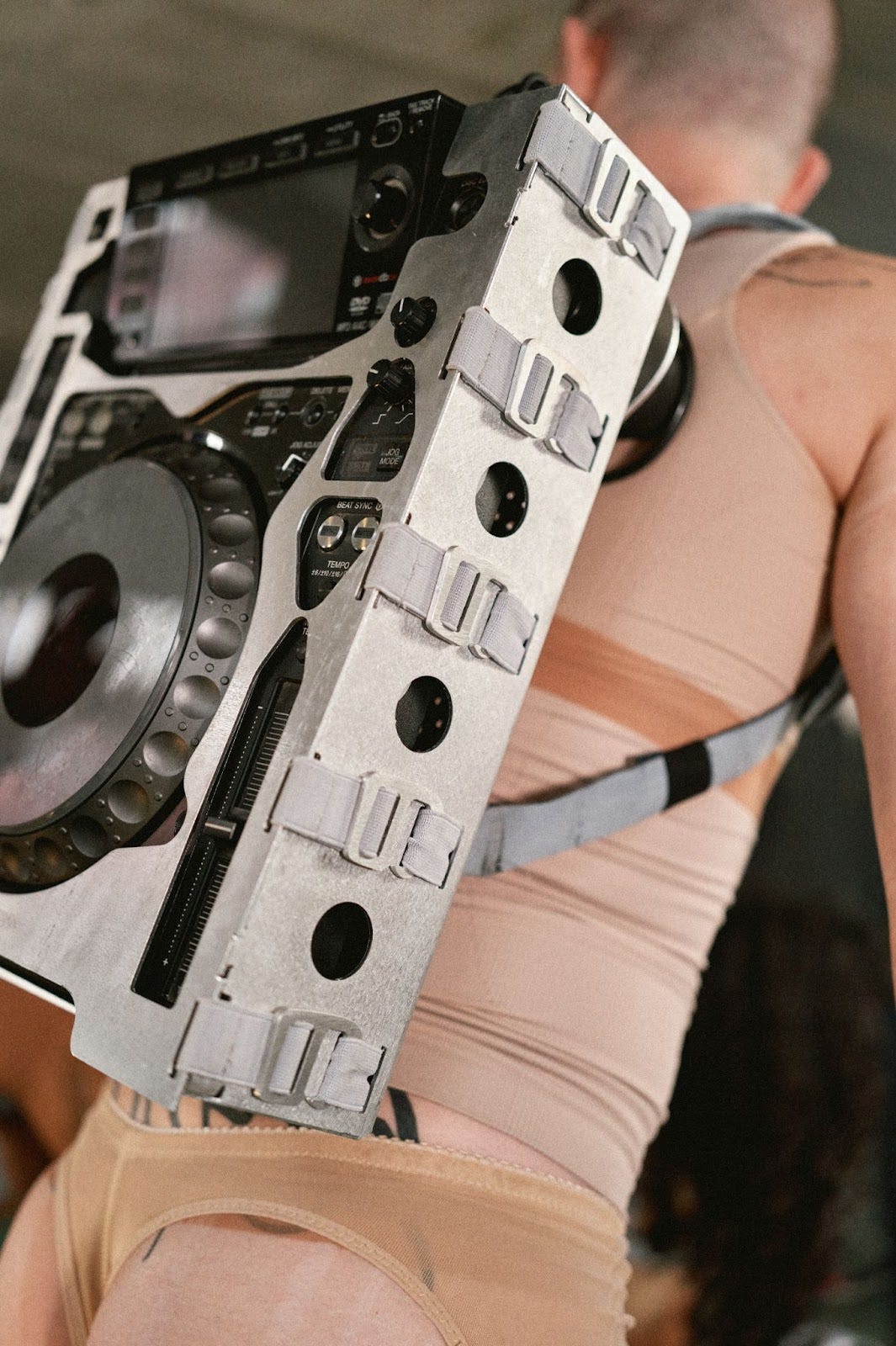
Isabella Reid: How did the project support/nourish your community?
playbody: One of the pillars of playbody is the community we are a part of. Our aim with the party is to provide a safe space for our people, who are primarily queer, to play, feel joy and nourish connection. Our designs encourage people to take an active stand — you can climb things, hang from them, touch them… We wanted to push the idea that each of our energy contributes to the energy in the room as a whole; we all have a responsibility to participate in creating something beautiful and meaningful. That’s why “human booth” is not considered by us as a performance piece. We’re not looking for “actors” or performers outside our circles to be part of the booth. Instead, there’s the idea that anyone from our community can participate and become a booth babe. The teaser video was barely out, but so many friends had already asked to participate in the next playbody after seeing it! We’ve noticed how eager our community is to get involved at every level of what we do, and the “human booth” is one iconic way to do it.
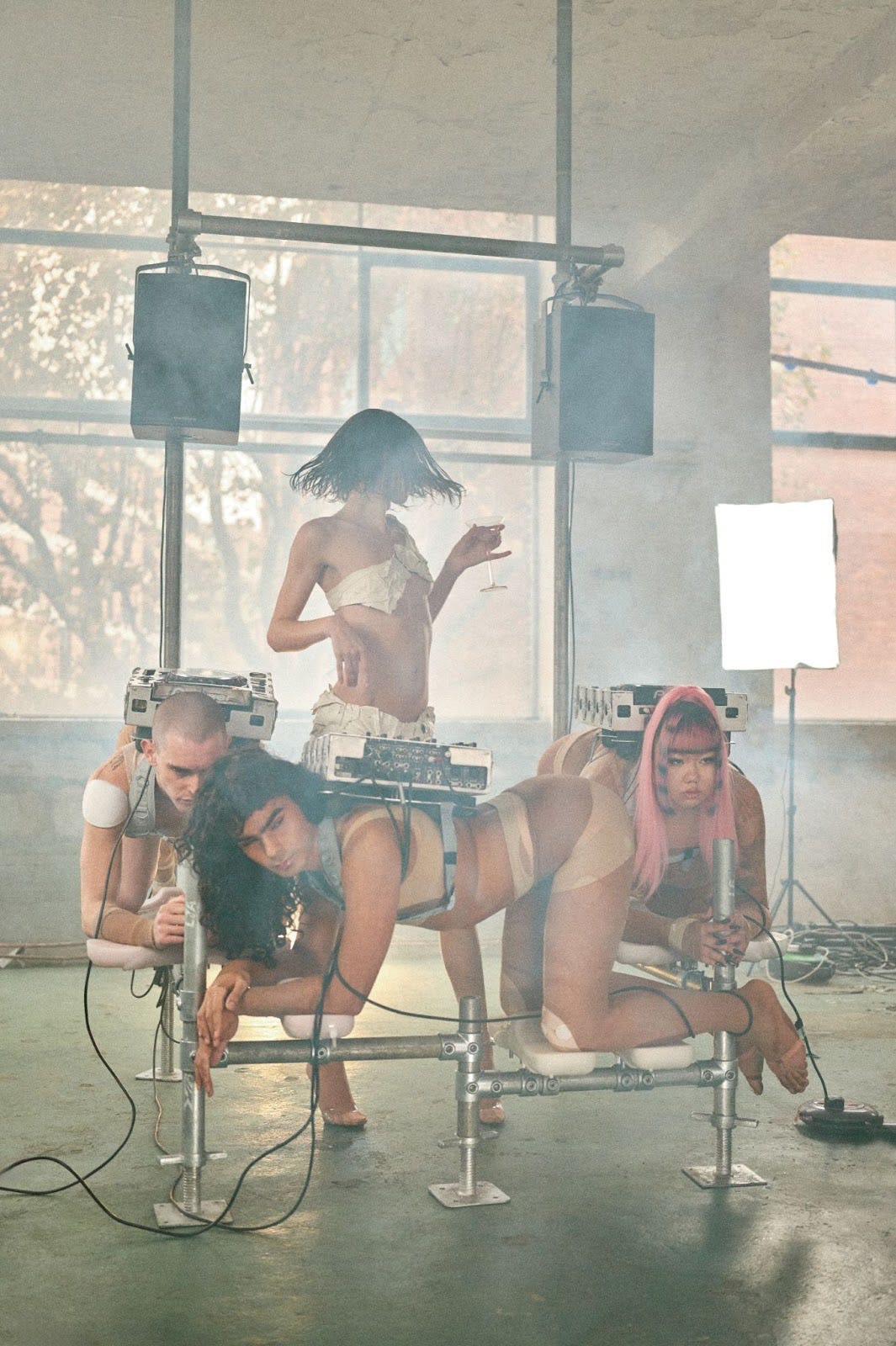
Isabella Reid: Do you believe there is enough support out there for creatives today? If the answer is no, why do you think that is?
playbody: Although the UK has more support for creatives than many other countries, austerity measures have led to massive cuts in arts funding over the past decade, particularly for smaller organisations and local initiatives. This is why The MØRNING People Fund is so critical. It enables people and collectives with ideas that most funding bodies wouldn’t even consider to create projects that push the boundaries of what’s currently being produced.
Technology and crowdfunding schemes have democratised funding for many people, which is something to be grateful for.
It’s been a really special year and we are so grateful for all the applications that drop into our inbox, proving that there are so many wonderful people with brave ideas pushing culture forward and embodying Be Less Shit. We hope you have all enjoyed seeing the fund flourish.
That's all for today. Don't forget: If you or a friend have a project that aims to push culture forward and embody 𝖇𝖊 𝖑𝖊𝖘𝖘 𝖘𝖍𝖎𝖙, keep tabs on Instagram for the next opening - it may be sooner than you think.
Burn After Reading is taking a little break to recharge, but we’ll be back in the new year. Until next time…✩₊˚.⋆☾⋆⁺₊✧





